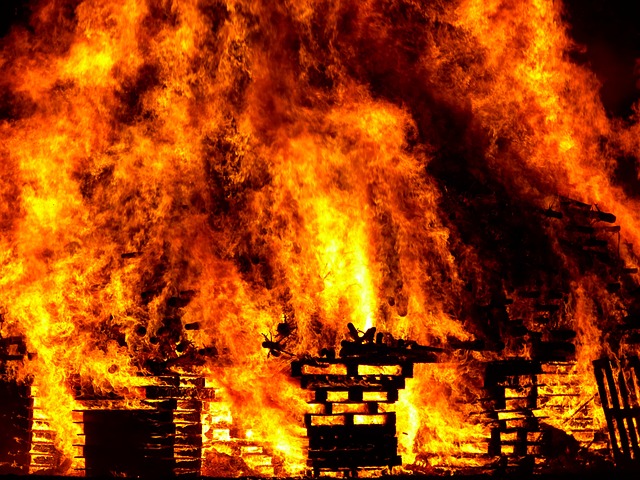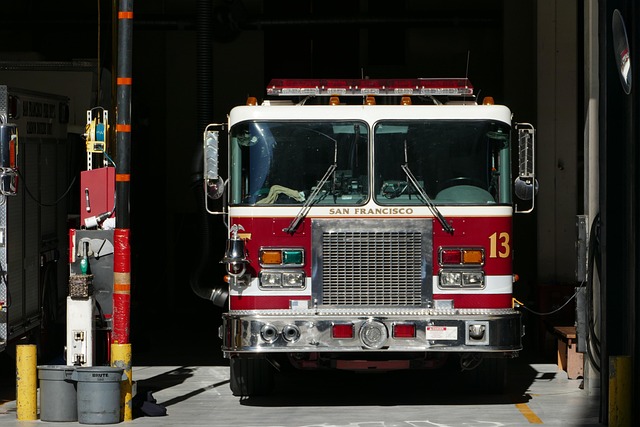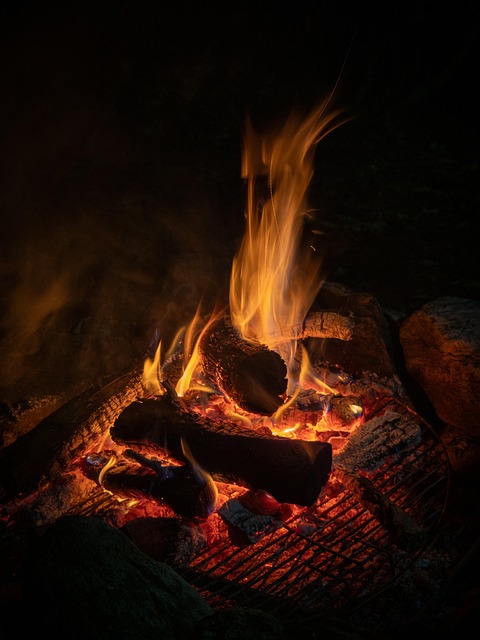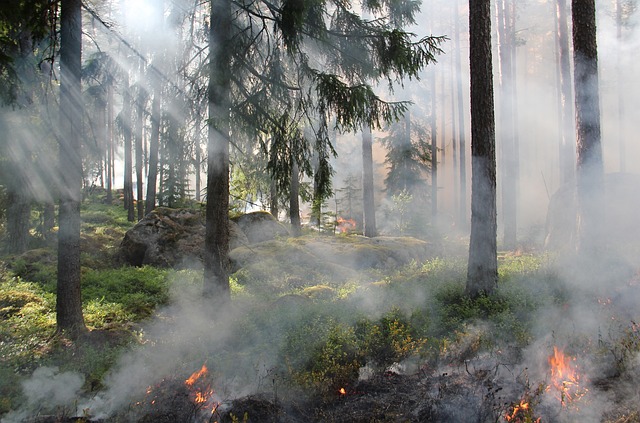Selling a fire-damaged home in California requires careful remediation due to health risks from toxic smoke containing harmful chemicals. Immediate actions after a fire include evacuation, emergency services, and containment. Documenting damage with photos and videos is essential for insurance claims and buyers. Professional assessment identifies structural damage and potential water/mold issues unique to California's climate and building codes. Remediation involves specialized equipment, decontamination, odor elimination, and final safety inspection. Understanding legal obligations, insurance policies, and market considerations is crucial before investing in repairs to restore a fire-damaged home's value for successful sale in California's competitive real estate market.
Smoke damage can leave your California home a hazardous mess, but understanding remediation is key to ensuring a safe, market-ready property. This guide navigates the process from immediate post-fire protection to legal considerations for homeowners looking to sell a fire-damaged residence in California. Learn about different smoke damage types, health risks, and expert assessment techniques. Discover a step-by-step restoration process that enhances your home’s value, adhering to local regulations.
- Understanding Smoke Damage: Types and Health Risks
- Immediate Steps After a Fire: Protecting Your Home
- Assessing the Damage: What to Look For in California Homes
- Remediation Process: Step-by-Step Guide for Professionals
- Restoring Value: How Smoke Damage Repair Can Increase Home Sales
- Legal and Insurance Considerations for Homeowners in California
Understanding Smoke Damage: Types and Health Risks

Smoke damage can result from various sources, such as kitchen fires, wildfires, or even burning candles, and it poses significant risks to both property and human health. When a fire occurs, toxic smoke fills the air, leaving behind residue and odors that can persist for months if not properly addressed. Understanding the types of smoke damage is crucial for effective remediation in California, where selling a fire-damaged home often requires thorough cleaning and restoration.
Acrid smoke from burning materials contains harmful chemicals like carbon monoxide, cyanide, and volatile organic compounds (VOCs). These substances can irritate eyes, nose, and throat, cause respiratory issues, and even lead to long-term health problems. Inhaling smoke particles may result in acute or chronic health effects, including coughing, wheezing, and increased risk of cardiovascular diseases. For individuals with pre-existing conditions like asthma or heart disease, the impact can be severe. Therefore, when preparing a fire-damaged home for sale, it’s essential to follow proper remediation protocols to mitigate these risks and ensure the safety of potential buyers in California.
Immediate Steps After a Fire: Protecting Your Home

After a fire, the first steps to take are crucial for protecting your property and preventing further damage. In the immediate aftermath, it’s essential to ensure the safety of everyone involved and stop the spread of smoke and flames if possible. Evacuate the premises and call emergency services right away. Once the fire is under control, begin the process of containing and cleaning up the damage. This includes sealing off affected areas to prevent smoke and soot from infiltrating other parts of the home.
For homeowners in California considering how to sell a fire-damaged property, it’s vital to understand that prompt action can make a significant difference in the remediation process. Documenting the damage through photos and videos is key, as this will be useful for insurance claims and potential buyers who may want to assess the extent of the smoke damage. It’s also advisable to consult with professionals who specialize in fire restoration to guide you through the cleanup and ensure your home is safe and habitable again.
Assessing the Damage: What to Look For in California Homes

After a fire, assessing smoke damage in California homes is crucial for safe and effective remediation. Homeowners should look for visible signs like soot buildup on walls, ceilings, and vents, as well as charred or discolored surfaces. Check for odour—a distinctive smoky aroma can indicate hidden damage. Pay attention to structural elements such as joists, beams, and insulation, which may be affected by smoke and heat.
California’s diverse climate and building codes mean that fire damage can vary widely. Look for signs of water damage from firefighting efforts, as well as potential mold growth in damp areas. Professional assessment is recommended to ensure thoroughness and accuracy, especially when considering how to sell a fire-damaged home. Proper documentation of the damage is key for insurance claims and potential buyer confidence.
Remediation Process: Step-by-Step Guide for Professionals

Smoke damage remediation is a meticulous process that requires professional expertise, especially in California where real estate markets are robust and homeowners seek guidance on how to sell a fire-damaged home. The first step involves assessing the extent of the smoke damage using specialized equipment. Professionals inspect surfaces, fabrics, and structural components for residual soot and tar particles, which can remain long after visible flames have been extinguished.
Once the assessment is complete, remediation begins with containment and decontamination. This includes setting up barriers to prevent the spread of contaminants and wearing protective gear to safeguard against hazardous materials. The next stage involves removing affected items like furniture, carpets, and curtains for deep cleaning or replacement. Professionals use advanced cleaning techniques to eliminate smoke odors and stains from surfaces using specialized equipment and non-toxic solutions. Finally, after all affected areas are restored, a thorough inspection is conducted to ensure the property meets safety standards and is ready for occupation or sale in California’s competitive real estate market.
Restoring Value: How Smoke Damage Repair Can Increase Home Sales

Smoke damage can significantly devalue a property, making it challenging for homeowners in California to sell their affected homes. However, with proper smoke damage remediation, it is possible to restore the property’s value and marketability. The process involves more than just cleaning; it includes repairing structural damage, replacing contaminated items, and restoring the overall aesthetic appeal of the home.
Professional fire damage restoration services in California employ advanced techniques to mitigate odors, remove soot and ash, and replace damaged materials with new ones. This not only enhances the home’s curb appeal but also ensures that potential buyers are confident in the property’s safety and health. By investing in smoke damage repair, homeowners can increase their home’s value, making it more attractive to prospective buyers in a competitive California real estate market.
Legal and Insurance Considerations for Homeowners in California

When dealing with smoke damage from a fire in your California home, understanding legal and insurance considerations is crucial before you attempt to sell. The first step for homeowners is to document the damage thoroughly—take photos and videos of affected areas, keeping records of all expenses related to remediation efforts. This not only helps in settling insurance claims but also ensures you have a clear picture of the repairs required.
California law requires disclosure of any material defects known to the seller when putting a property on the market. Smoke damage can be considered a hidden defect, so homeowners must disclose this information accurately. Insurance policies vary, and it’s essential to review yours to understand coverage for smoke damage remediation. Many policies include provisions for such repairs, but specific steps and timelines for reimbursement may differ, so checking with your insurer is critical before proceeding with any work.
Smoke damage can significantly impact a home’s value, but with proper remediation, it is possible to restore properties to their pre-fire condition. Understanding the process, from immediate post-fire steps to legal considerations, is crucial for homeowners in California aiming to sell their fire-damaged homes. By following a systematic approach, including assessing damage, implementing remediation strategies, and considering insurance claims, property owners can enhance their home’s appeal and increase sales potential. This guide provides a roadmap to navigating smoke damage remediation, ensuring a smoother transition back into the market for folks in California looking to sell.






